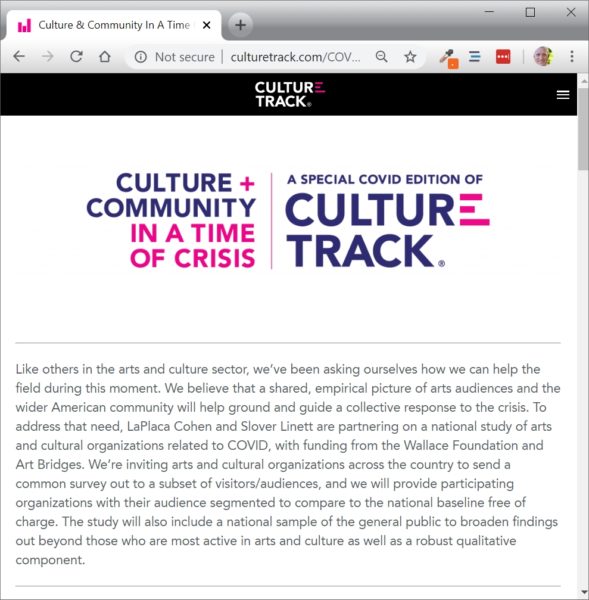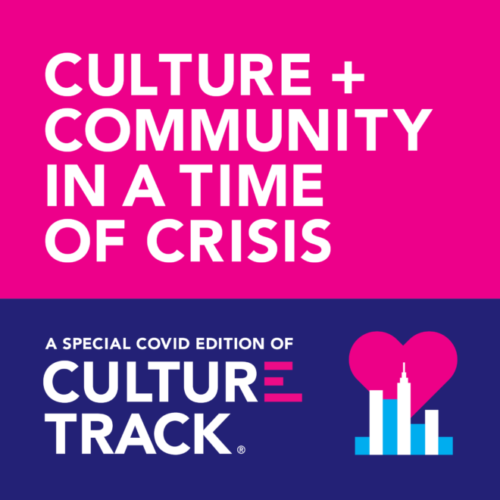News & Notes
Special announcement: A national audience & community study for COVID resilience
I’m humbled and excited to share with you what my colleagues and I have been working on days, nights, and weekends for the last three weeks. It’s for you, for your cultural organization, and above all for the people and communities you serve.
We’re collaborating with our friends at LaPlaca Cohen and other partners, funders, and advisors to conduct a rapid but nuanced study of cultural audiences and the wider American public to help during and after COVID — essentially an emergency edition of Culture Track, but with new questions built around the idea that relevance and resilience are two-way streets: What do people and communities need from their cultural organizations, and What can cultural organizations expect from their communities and audiences?
We believe that means asking people what they’re going through, what they need, how they’re meeting — or aren’t meeting — those needs; how creativity, learning, and digital cultural experiences fit in right now (or don’t); what they miss or long for in the lockdowns; and what kinds of arts and museum experiences would be most valuable to them when we can start to gather again.
Understandably, many cultural leaders, marketers, and planners are focused on questions about when audiences will be ready to resume attending the opera or visiting a science museum with their families. Other researchers have been asking those questions or will be soon, and we’re planning to explore them, too, in a different way — as part of a holistic look at needs, behaviors, values, and perceptions during the pandemic and beyond.
With generous lead funding from the Wallace Foundation and additional support from Art Bridges and FocusVision, we’ll be using both qualitative, humanistic methods and a large-scale quantitative survey designed in consultation with both practitioners and research methodologists. We’re delighted to be working again with NORC at the University of Chicago to survey a representative sample of the U.S. population, including people from marginalized and challenged communities. And we’ve been honored and a little amazed to have heard already from more than 100 cultural organizations in 20 states that want their audiences included in the study — before we announced the project.
That’s a powerful collective beginning. But we need more representation and range. Most importantly, we want the audience-list side of our sample to include the participants and audiences of small, culturally specific, community embedded, social justice-focused, POC-led, and POC-serving arts and culture organizations. That kind of intentional oversampling (the social science term) will let us shine more light, not just on the past and the strange present of the cultural sector, but also on its most hopeful future: on what relevance and service and engagement could look like if we can use this crisis, rethink not just restart, and emerge from it different than we went in.
There’s much more to say and ask. We’re developing a project website, but for now I’ll point you to this still-evolving FAQ page with information about how you can include your audiences in the survey. Please share with your local and national networks; we’re in this together.
I’m also eager to hear what you’re going through and how this research could help your organization or practice. What do you most urgently need to know about your audience or your community in order to make decisions, serve, plan, strategize, experiment, and recover? Email me or pick up the phone: (773) 348-9200 x102.
And please, stay healthy and safe.
Photo: Sophia Scarano, bassist, Tallahassee Symphony (Annie Flanagan, from her photo essay for the NYTimes, April 3, 2020).

